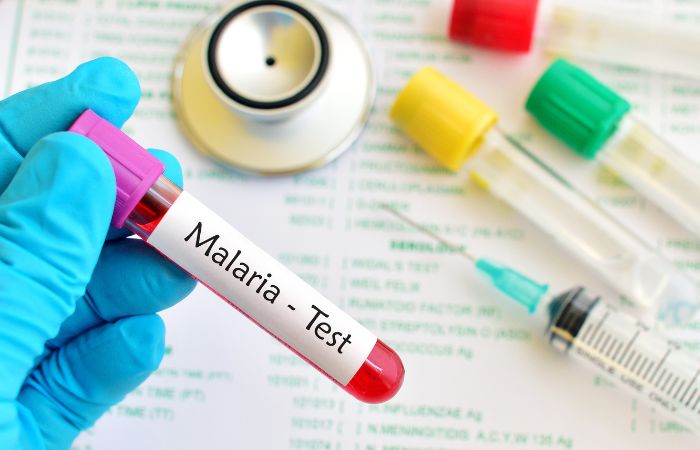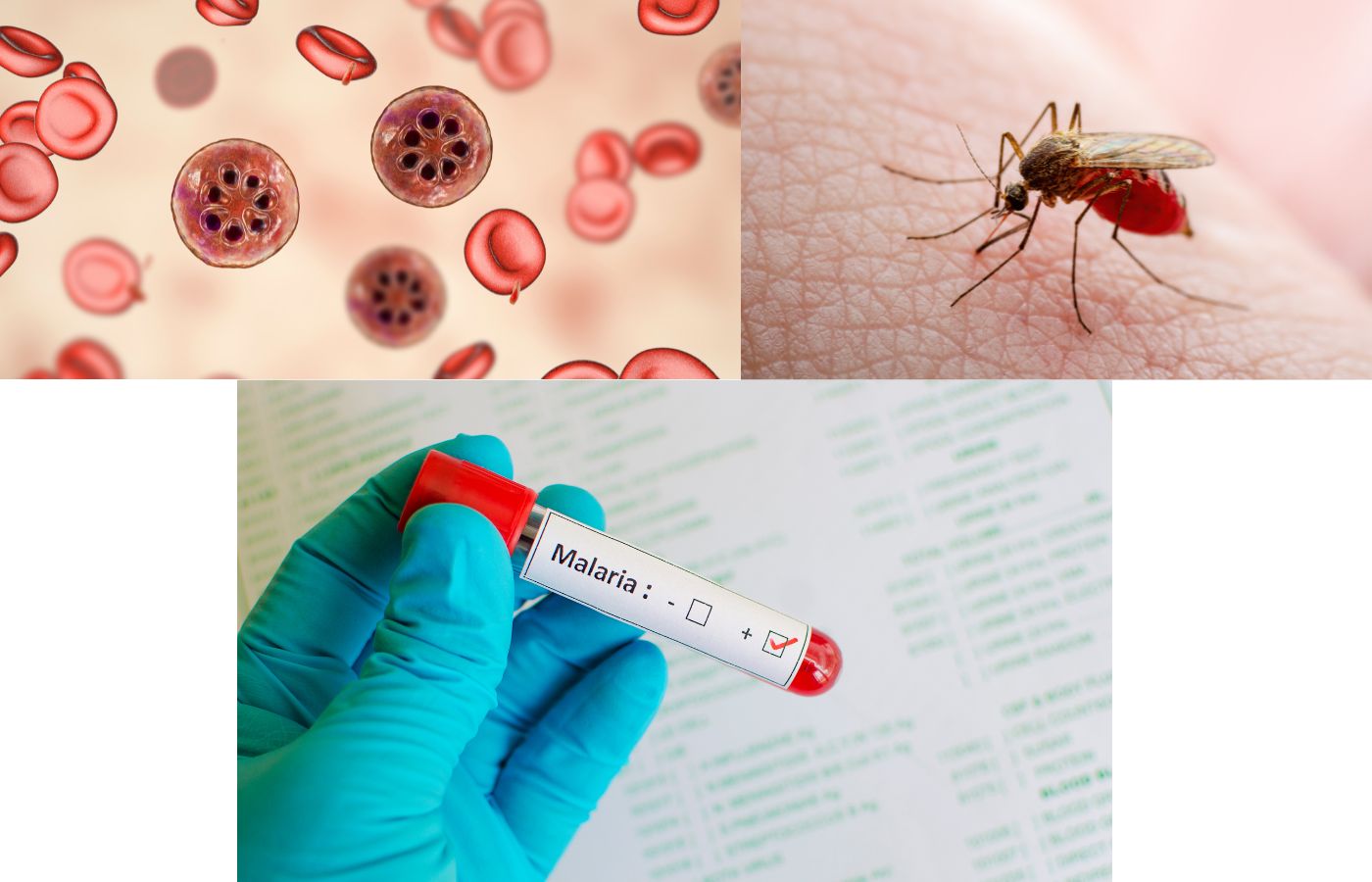
Malaria is a life-threatening disease caused by the Plasmodium parasite, which is transmitted to humans through the bite of an infected female Anopheles mosquito. It is one of the most dangerous and prevalent vector-borne diseases worldwide, especially in tropical and subtropical regions. Understanding how malaria spreads and the crucial role mosquitoes play in its transmission is key to controlling and preventing the disease.
Malaria is a serious and sometimes fatal disease caused by parasites of the Plasmodium species. There are five types of Plasmodium parasites that can infect humans, with Plasmodium falciparum and Plasmodium vivax being the most common and dangerous. The infection is transmitted through the bites of female Anopheles mosquitoes that carry the parasite. When a mosquito bites a person who is already infected, it picks up the parasite, which then undergoes further development in the mosquito’s body. Once the mosquito bites a healthy person, it injects the parasite into the bloodstream, leading to infection.
The transmission of malaria relies heavily on the presence of the female Anopheles mosquito. Unlike other mosquitoes that typically feed on plant nectar, female Anopheles mosquitoes require a blood meal to reproduce. During this feeding process, they may inadvertently pass on the malaria parasite to humans. This makes mosquitoes the vector that spreads the disease.
Key Characteristics of Anopheles Mosquitoes
Female Anopheles mosquitoes are distinguishable from other mosquito species by the following traits:
1] Quiet flight: Unlike other mosquitoes that create a buzzing sound while flying, Anopheles mosquitoes are quieter, which means they are harder to notice.
2] Nighttime feeders: Anopheles mosquitoes are primarily active between dusk and dawn. This means that people in malaria-endemic areas are most at risk during nighttime hours.
3] Preferred habitat: These mosquitoes breed in clean, stagnant water such as ponds, puddles, rice fields, and water storage containers. They require this water to lay their eggs.
The life cycle of the Plasmodium parasite is complex and involves both the mosquito and the human host. The cycle can be divided into two main stages: one within the mosquito and one within the human.
Stage 1: Infection in the Mosquito
A] Mosquito picks up the parasite: When a female Anopheles mosquito bites a person infected with malaria, she ingests blood that contains Plasmodium parasites in the form of gametocytes (sexual forms of the parasite).
B] Parasite development inside the mosquito: Once inside the mosquito, the gametocytes mature and fuse to form zygotes. These zygotes then develop into sporozoites (the infectious stage of the parasite), which travel to the mosquito’s salivary glands.
C] Ready to infect: After this process, the mosquito is now capable of transmitting the parasite to another human host when it bites again.
Stage 2: Infection in Humans
A] Transmission through the bite: When an infected mosquito bites a human, it injects sporozoites into the bloodstream.
B] Liver invasion: These sporozoites travel to the liver, where they infect liver cells and mature into merozoites. The liver phase of infection typically takes 1-2 weeks.
C] Infection of red blood cells: The merozoites are released from the liver into the bloodstream, where they infect red blood cells. This is when the disease’s symptoms, such as fever, chills, and anemia, typically begin.
D] Parasite replication: Inside the red blood cells, the Plasmodium parasite multiplies, and eventually, the red blood cells burst, releasing new merozoites that go on to infect other red blood cells.
E] Gametocytes formation: Some of the merozoites mature into gametocytes, which can be ingested by another mosquito when it takes a blood meal, thereby continuing the cycle.

The symptoms of malaria can vary in severity depending on the type of Plasmodium parasite involved and the individual’s immune status. Common symptoms of malaria disease include: Fever and chills, Sweating, Headaches, Nausea and vomiting, Fatigue and muscle aches, Abdominal pain, Jaundice (yellowing of the skin and eyes), Anemia (due to the destruction of red blood cells).
If left untreated, malaria can lead to severe complications such as organ failure, seizures, coma, and even death.
Malaria is most prevalent in sub-Saharan Africa, Southeast Asia, parts of South America, and certain regions of the Middle East. In India, malaria is endemic in many areas, with states like Nagpur, Delhi, Mumbai, and Pune experiencing significant cases, particularly in rural and underserved areas.
While malaria is largely preventable and treatable, many regions still face challenges in controlling its spread due to factors such as:
A] Inadequate healthcare infrastructure
B] Drug resistance in Plasmodium falciparum
C] Lack of effective vector control measures
D] Poor access to prevention and treatment services
Since mosquitoes are the primary vector for malaria, controlling their population and preventing bites are the most effective ways to reduce the spread of the disease. Several strategies can be used to prevent malaria transmission:
1. Mosquito Control
A] Insecticide-treated bed nets (ITNs): Sleeping under mosquito nets treated with insecticides is one of the most effective ways to prevent malaria, especially in areas with a high mosquito population.
B] Indoor spraying: Spraying insecticides inside homes, particularly in areas where mosquitoes are most active, can help kill mosquitoes and reduce their numbers.
C] Larviciding: This involves using chemical treatments to target the mosquito larvae in water bodies where mosquitoes breed.
2. Personal Protection
A] Repellents: Applying insect repellents on exposed skin can help prevent mosquito bites, especially during peak biting times at night.
B] Protective clothing: Wearing long sleeves and long pants when outdoors, especially during dusk and dawn, can reduce the risk of mosquito bites.
3. Early Diagnosis and Treatment
Early detection of malaria is critical for effective treatment. If you experience symptoms like fever, chills, and body aches, it is essential to seek medical attention promptly. Diagnopein, with its comprehensive diagnostic services, can assist in the early detection of malaria through blood tests, helping to determine the presence of the Plasmodium parasite.
4. Malaria Vaccination
In recent years, vaccines have been developed to help prevent malaria. The RTS,S/AS01 malaria vaccine has been the subject of research and trials and has shown some effectiveness in preventing malaria in young children. However, vaccines are not yet a universal solution, and other prevention methods remain crucial.
Healthcare providers play a crucial role in managing malaria through early detection, proper treatment, and prevention strategies. Diagnopein offers diagnostic services for malaria and other infectious diseases in cities such as in Pune, Mumbai, delhi, and Nagpur to have the necessary treatment promptly.
Treatment of Malaria
Malaria treatment typically involves antimalarial medications, with the specific drugs used depending on the type of Plasmodium parasite causing the infection, the severity of the disease, and the geographical region where the infection was acquired. Some common antimalarial drugs include:
A] Chloroquine: Often used for less severe cases of malaria caused by Plasmodium vivax or Plasmodium ovale.
B] Artemisinin-based combination therapies (ACTs): The most effective treatment for Plasmodium falciparum malaria.
C] Quinine: Used in severe cases or when other drugs are not effective.
For serious or complicated malaria, intravenous (IV) treatment may be required, and hospitalization may be necessary.